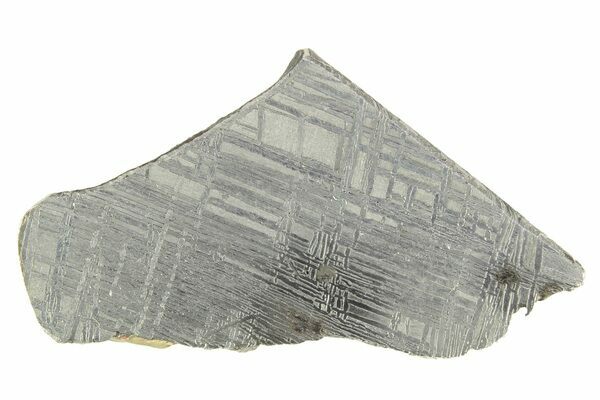Meteorites - Widmanstätten Patterns and Neumann Lines
Iron meteorites are a fascinating subject for both scientists and enthusiasts, primarily due to their unique structural features and the insights they offer into the formation of the solar system. Among the most intriguing characteristics of these meteorites are the Widmanstätten patterns and Neumann lines, both of which provide valuable information about their origins and history.
Iron meteorites are primarily composed of iron and nickel, originating from the cores of differentiated planetary bodies. These meteorites can be classified into several categories, the most notable being the octahedrites, hexahedrites, and ataxites, based on their composition and crystal structure. They represent a fraction of meteorites found on Earth, but their study offers significant insights into the processes that shaped the early solar system.
Widmanstätten patterns are distinctive, interlocking patterns of crystals that can be observed on the polished surfaces of iron meteorites. These patterns are formed through the slow cooling of the metallic alloy over millions of years within the parent body.
The patterns consist of two primary phases: kamacite (an iron-nickel alloy with about 5% nickel) and taenite (which contains around 20% to 65% nickel). When an iron meteorite is cut and etched with a suitable acid, the different etching rates of kamacite and taenite reveal a unique crystalline structure. These patterns typically displays a series of parallel lines or bands that can appear as a chevron or lattice formation. The distinctiveness of these patterns varies among meteorites, depending on the cooling rate and the specific alloy composition. The presence and structure of Widmanstätten patterns serves as a key identifier for classifying iron meteorites.
Neumann lines are another crucial feature found in some iron meteorites. They are straight, sometimes slightly curved lines or bands that can intersect the Widmanstätten patterns. Neumann lines are formed during the solidification of the metallic alloy in the meteorite. They are thought to result from the rapid cooling and solidification processes that occur when a meteorite passes through the atmosphere or when it experiences significant impacts.
These lines often appear as thin, straight features that cut across the Widmanstätten patterns, indicating that they are a separate structural feature within the meteorite. They may be more pronounced in certain types of meteorites, particularly those that have undergone dynamic events. Neumann lines can provide additional information about the physical conditions the meteorite experienced after its formation. Their presence may suggest that the meteorite underwent shock metamorphism due to high-energy impacts, which can alter its internal structure.
Iron meteorites are primarily composed of iron and nickel, originating from the cores of differentiated planetary bodies. These meteorites can be classified into several categories, the most notable being the octahedrites, hexahedrites, and ataxites, based on their composition and crystal structure. They represent a fraction of meteorites found on Earth, but their study offers significant insights into the processes that shaped the early solar system.
Widmanstätten Patterns
Widmanstätten patterns are distinctive, interlocking patterns of crystals that can be observed on the polished surfaces of iron meteorites. These patterns are formed through the slow cooling of the metallic alloy over millions of years within the parent body.
The patterns consist of two primary phases: kamacite (an iron-nickel alloy with about 5% nickel) and taenite (which contains around 20% to 65% nickel). When an iron meteorite is cut and etched with a suitable acid, the different etching rates of kamacite and taenite reveal a unique crystalline structure. These patterns typically displays a series of parallel lines or bands that can appear as a chevron or lattice formation. The distinctiveness of these patterns varies among meteorites, depending on the cooling rate and the specific alloy composition. The presence and structure of Widmanstätten patterns serves as a key identifier for classifying iron meteorites.
Neumann Lines
Neumann lines are another crucial feature found in some iron meteorites. They are straight, sometimes slightly curved lines or bands that can intersect the Widmanstätten patterns. Neumann lines are formed during the solidification of the metallic alloy in the meteorite. They are thought to result from the rapid cooling and solidification processes that occur when a meteorite passes through the atmosphere or when it experiences significant impacts.
These lines often appear as thin, straight features that cut across the Widmanstätten patterns, indicating that they are a separate structural feature within the meteorite. They may be more pronounced in certain types of meteorites, particularly those that have undergone dynamic events. Neumann lines can provide additional information about the physical conditions the meteorite experienced after its formation. Their presence may suggest that the meteorite underwent shock metamorphism due to high-energy impacts, which can alter its internal structure.
 Reviews
Reviews







